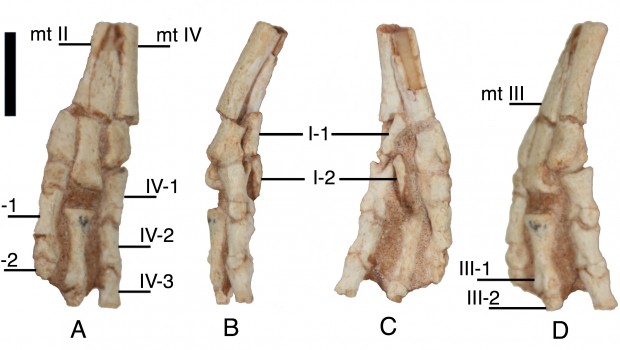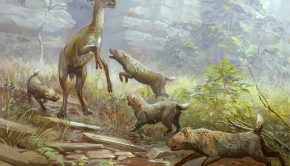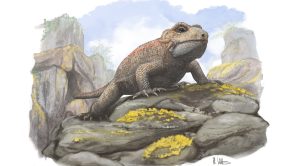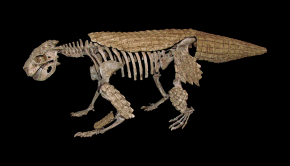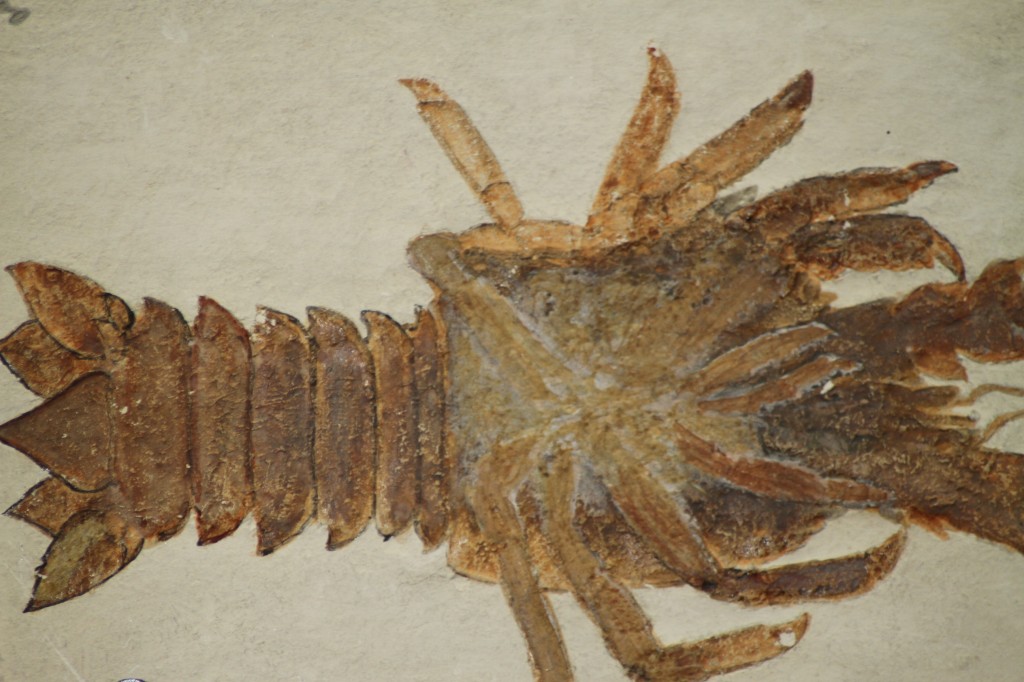Episode 8: Mesozoic Vertebrate Ecology
The Mesozoic Era saw the spectacular rise and fall of many groups, particularly in terrestrial vertebrates. These include birds, squamates, crocodiles, and pterosaurs, who wove a complex tapestry of evolution through the 185 million years of the Mesozoic, some even persisting until now. Dave Hone, now of Queen Mary in London, has extensively studied the ecology of many of these now-extinct organisms, especially theropod dinosaurs, to gain rare insights into how they would have lived millions of years ago. You can keep track of his research by following his blogs at the Guardian and Archosaur Musings webpages.
Podcast: Download (Duration: 56:47 — 78.0MB)
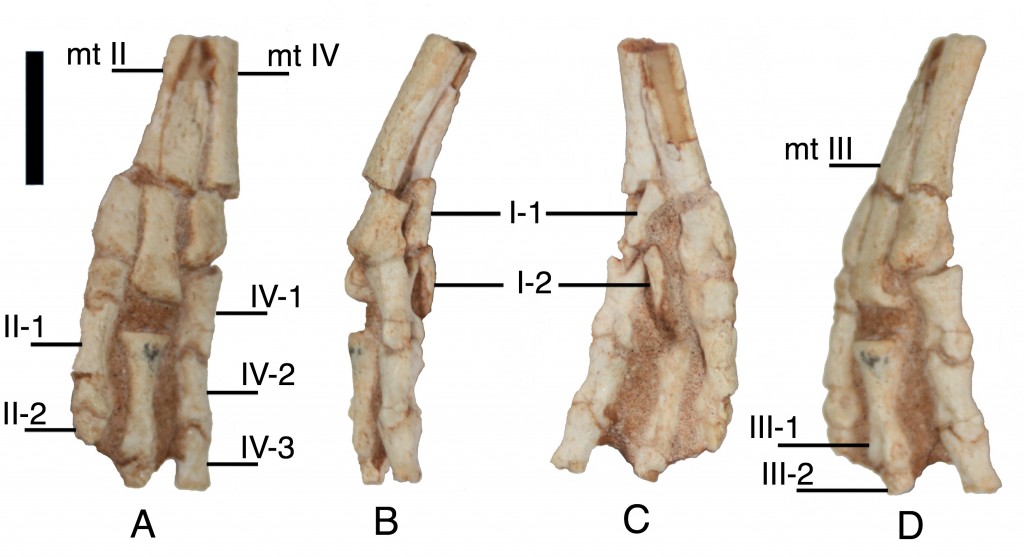
The alvarezsaur pes is refereed to Linhenykus. The various labels ID the bones in the foot, so I, II, III, and IV are the digits and the numbers 1, 2, 3 etc. ID the bones (phalanges).
Digit I is present, making this only the second alvaezsaur known with one.
Source: Hone, D.W.E., Choiniere, J.N., Tan, Q. & Xu, X. An articulated pes from a small parvicursorine alvarezsauroid (Dinosauria: Theropoda) from Inner Mongolia, China. Acta Palaeontologica Polonica (free download)
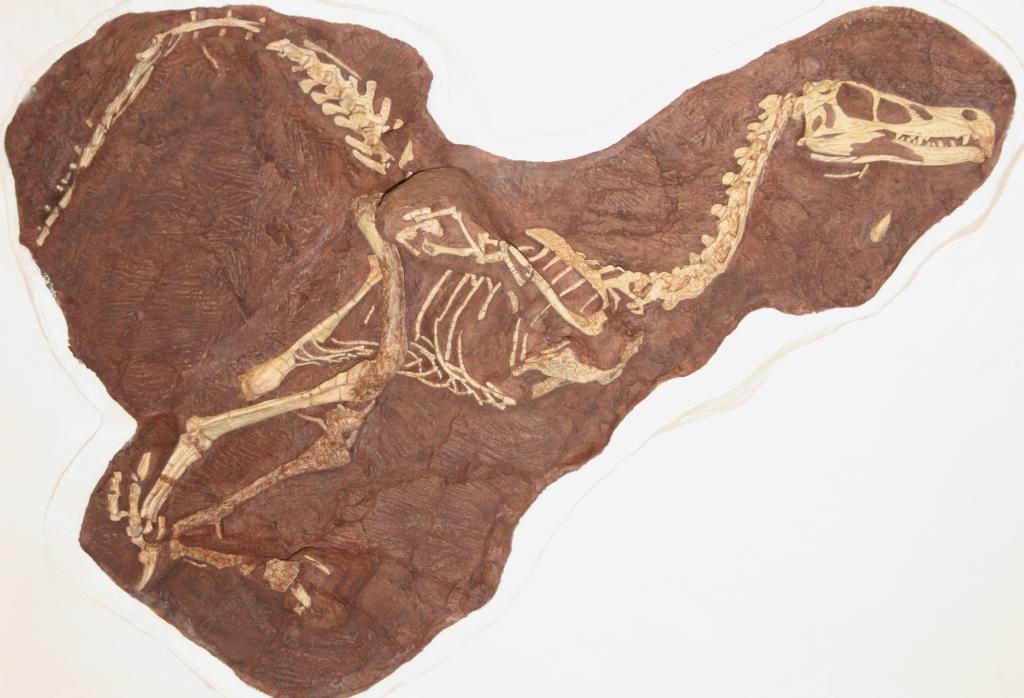
A cast of Linheraptor, an example of the kind of material that can come out of the Chinese fossil beds. Linheraptor is a dromaeosaur, so close to other taxa such as Velociraptor and Microraptor.
Source: Xu, X., Choinere, J., Pittman, M., Tan, Q., Xiao, D., Li, Z., Tan, L., Clark, J., Norell, M., Hone, D.W.E. & Sullivan, C. 2010. A new dromaeosaurid (Dinosauria: Theropoda) from the Upper Cretaceous Wulansuhai Formation of Inner Mongolia, China. Zootaxa, 2403: 1-9 (free download)
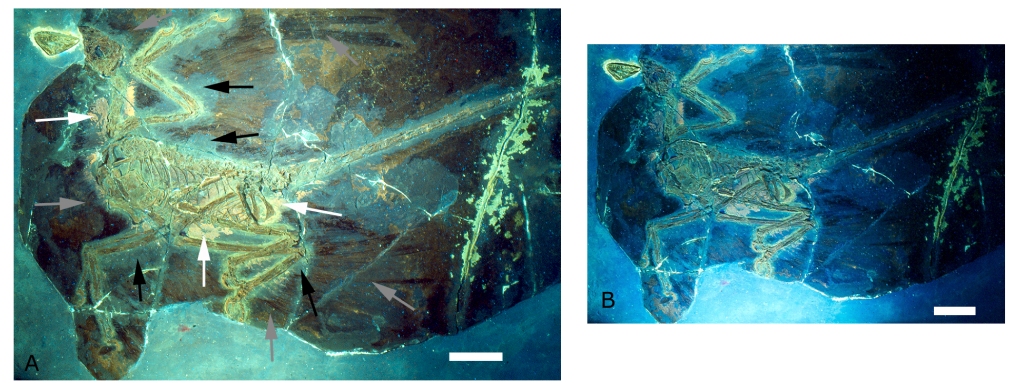
Microraptor under UV light showing differential preservation of the bones, feathers and some of the decayed soft tissues. The different colours are due to different lights and filters, and they help bring up different tissues or stains in different ways. The white arrows point to bones, the grey to feathers and black to the ‘halo’ where feathers appear to be absent under natural light but can be seen under UV.
Source: Hone, D.W.E., Tischlinger, H., Xu, X. & Zhang, F. 2010. The extent of the preserved feathers on the four-winged dinosaur, Microraptor gui under ultraviolet light. PLoS One, 5: e9223 7p. (free download)
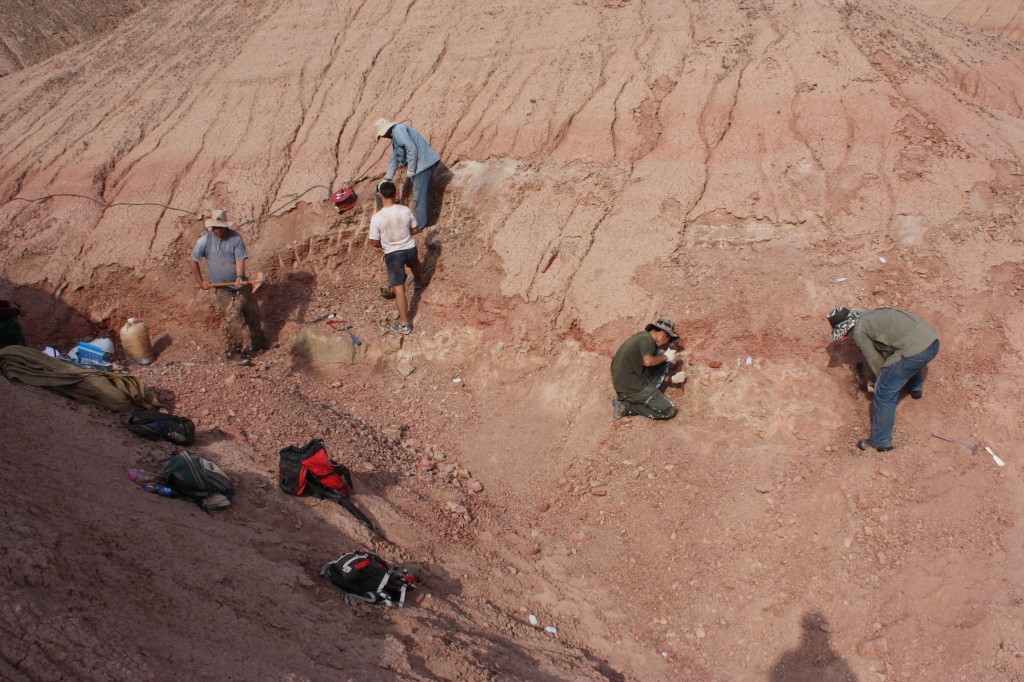
Quarrying out the theropod skeleton Dave found. The block they eventually took out is still under preparation. The main different bit is over on the left and the two people on the right are excavating turtle fragments from the same horizon.
Image credit: Dr. Dave Hone
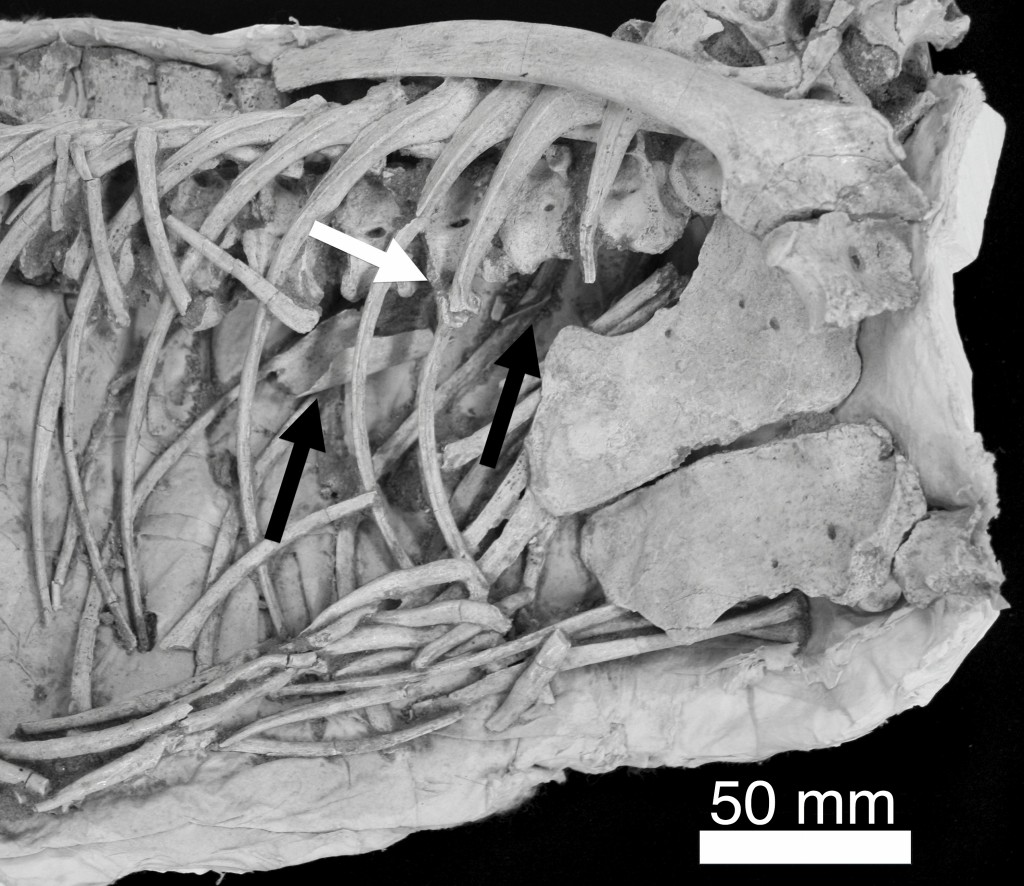
Pterosaur bone embedded within a theropod, evidence that it was eaten as opposed to washed together post-mortem. The white arrow points to a broken rib, and the black ones to the bits of pterosaur.
Source: Hone, D.W.E., Tsuhiji, T., Watabe, M. & Tsogbataar, K. 2012. Pterosaurs as a food source for small dromaeosaurs. Palaeogeography, Palaeoclimatology, Palaeoecology, 331: 27-30. (download)
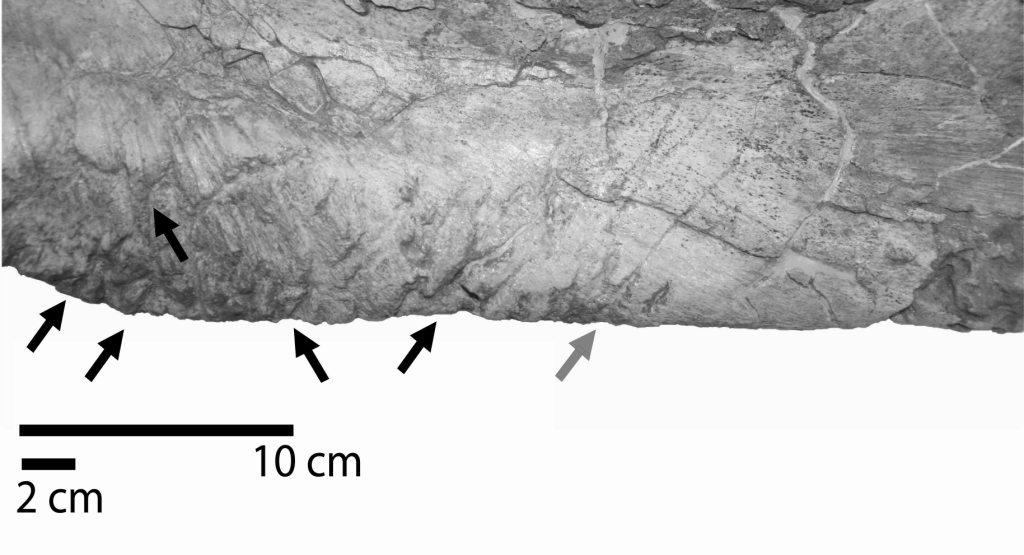
Feeding traces from the tyrannosaur Tarbosaurus on the humerus of a hadrosaur.
Source: Hone, D.W.E. & Watabe, M. 2010. New information on the feeding behaviour of tyrannosaurs. Acta Palaeontologica Polonica, 55: 627-634. (free download)
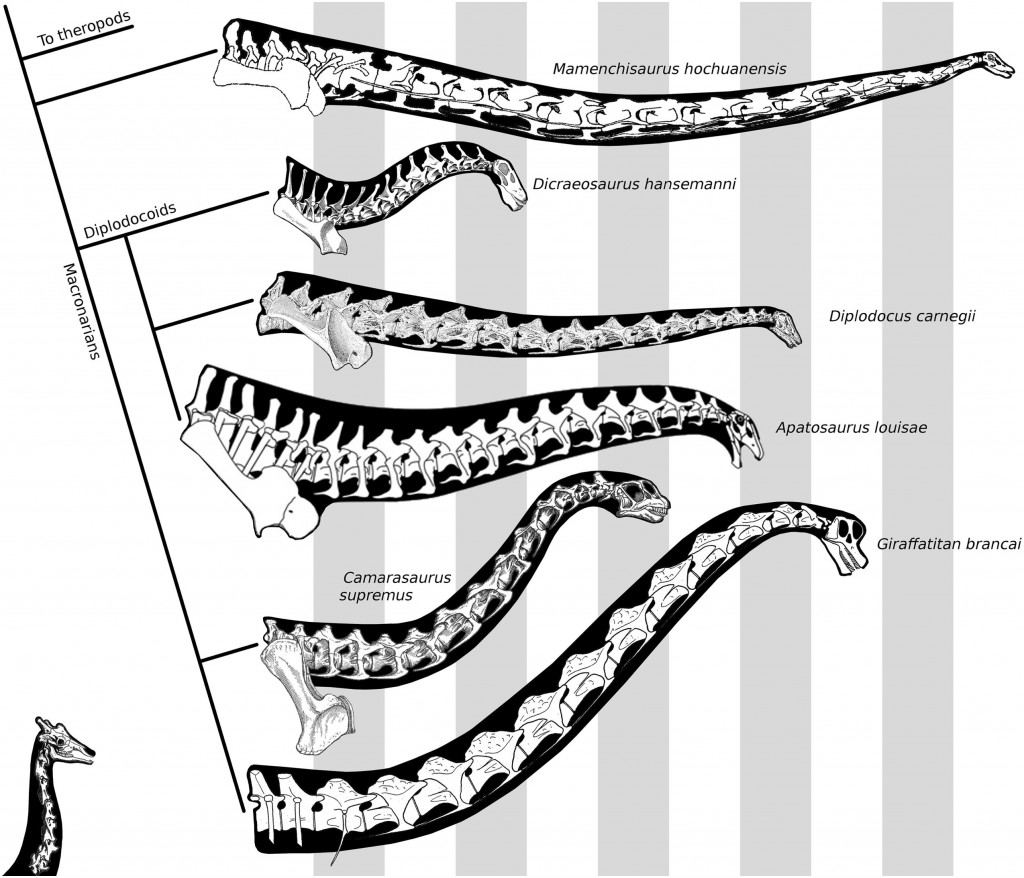
Were the long necks of sauropods adapted for sexual selection, or another function such as increasing the feeding envelope (or both)? There appears to be no special drive here, no obvious pattern of ever lengthening necks. Giraffe for scale.
Source: Taylor, M.T., Hone, D.W.E., Wedel, M.J. & Naish, D. 2011. The long necks of sauropods did not evolve primarily through sexual selection. Journal of Zoology, 285: 150-161. (free download)
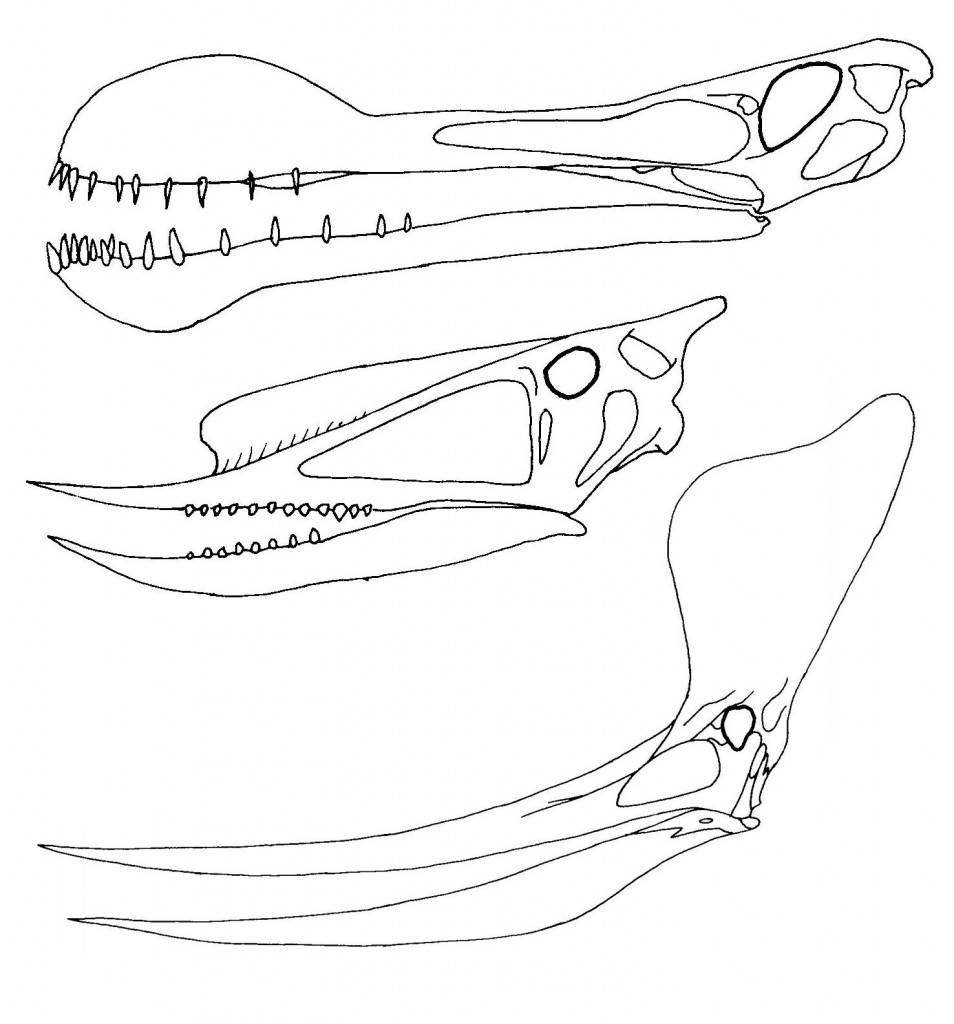
The skulls of several pterosaurs. The currently best-supported hypothesis for the function of their crests is some form of socio-sexual signalling. There’s a big variety here in the front and rear crests. In life many would have had soft tissue extensions to make them even larger.
Source: Hone, D.W.E., Naish, D. & Cuthill, I.C. 2012 Does mutual sexual selection explain the evolution of head crests in pterosaurs and dinosaurs? Lethaia, 45: 139-156. (download)

